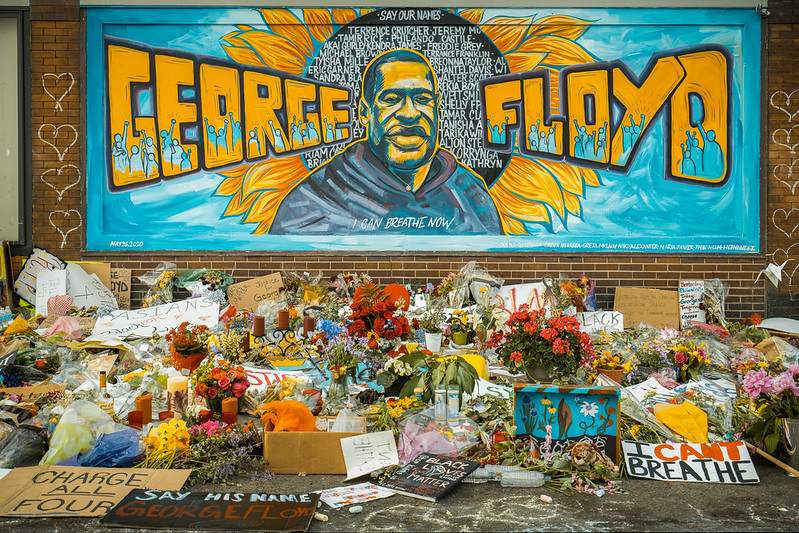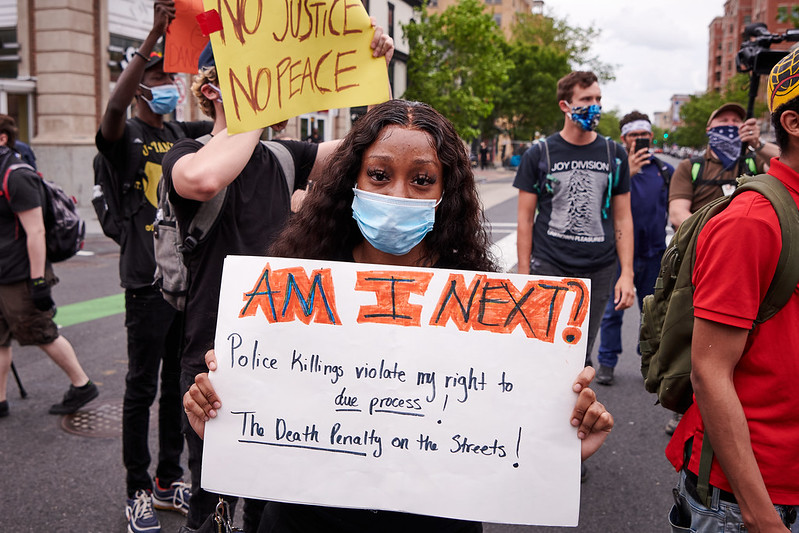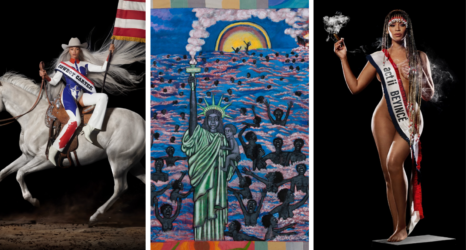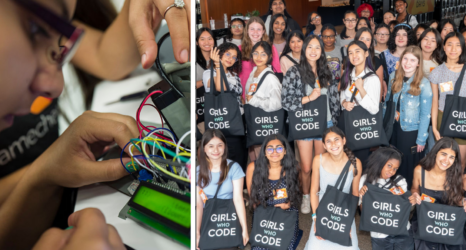The horrific racial tragedies of the South obscure the broader culture of racism and anti-Blackness in America—especially in the Midwest.

This article is the first installment in a three-part series that asks what can we learn from officer-involved killings, which on their own can appear isolated and disconnected from larger social conditions and cultural dynamics. In our series, “Who Killed George Floyd?”, we look at police violence as symptomatic of broader social and cultural injustice, racism and anti-Blackness, including in one of America’s most liberal communities.
This piece also goes hand-in-hand with “Who Killed George Floyd? (with Dr. Patricia Jones Blessman, Tasha Green Cruzat, T. Mychael Rambo, Roderick Ferguson, Pamela Alexander and Dr. George Woods).” Listen below:
Who killed George Floyd? The trial of former Minneapolis police officer Derek Chauvin is in pursuit of that answer. Perhaps, not since the O.J. Simpson trial has there been such attention to a criminal law matter. Over the past two weeks, gripping witness accounts and medical expert testimony provide a critical view into the horrific events on May 25, 2020, when Mr. Floyd suffocated underneath the knee of Derek Chauvin—a lynching as Dr. George Woods, an acclaimed neuropsychiatrist, described it.
I asked Dr. Woods: What lessons could be learned from this case? After all, clear video, photographs, witness testimony and medical reports point to Derek Chauvin’s role in callously and inhumanely ending George Floyd’s life. His response, which grounds this series, is that racism is a social determinant of health and life.
He explained, “George Floyd had such a high potential of being dead so early in life.” In America, “his potential for dying…early in life increased from the moment he was born and increased exponentially through his childhood, through adulthood.” Derek Chauvin, according to Dr. Woods “is really an institutional representation” of a larger society—one that reaches beyond the American South.

Historically, American racism is depicted by images of the American South. The pastoral South’s open secret—a racial hierarchy—is transformed time and again, over and over from slavery through Jim Crow. Law enforcement wielding heavy batons, unleashing snarling dogs, blasting powerful water hoses, and attacking peaceful protesters mark our American past. Unchecked, brutal power and violence indiscriminately landed on the unprotected bodies of Black men as well as women—and their children.
Once seen, the images leave an indelible mark—hard to ever unsee or forget. The image of Emmett Till comes to mind. Lynched shortly after his 14th birthday in Money, Mississippi, his mother, Mamie Till Mobley, insisted on an open casket at his funeral so that people in the United States and around the world might learn what could happen to a Black child in America. Emmett’s face was battered, and his skull was caved inward under the weight of continuous torture before his body was tossed in the Tallahatchie River—with a cotton gin roped around his neck.
However, the horrific racial tragedies of the South obscure the broader culture of racism and anti-Blackness in America, especially in the Midwest. Follow the Mississippi River northward and one will arrive in the Twin Cities—or what some Black residents call, “Northern Mississippi.” In Northern Mississippi, racism in policing, housing, employment and resistance to integration is a problem that extends up the liberal, socio-economic ladder.
According to the Minnesota Neighborhoods Organizing for Change (MN NOC), “The Twin Cities’ racial disparities, among the worst in the nation on every measure, have long shadowed a region consistently cited as one of the best places to live—for white people.” Anthony Newby, executive director at MN NOC, observes, “In many ways, Minnesota and Wisconsin have become the new South. The disparities we’re seeing rival anything in the Jim Crow era.”

Data on education, housing and employment in the Twin Cities underscore his point. A 2019 report from the Federal Reserve Bank of Minneapolis revealed that Minnesota ranks near the bottom in the United States for education achievement parity. In other words, it is one of the worst in terms of achievement gaps.
That said, none of this is a surprise to Black community leaders interviewed for this series. For example, retired Hennepin County Judge Pamela Alexander recently explained to me, “You’re actually talking about middle-class, upper income white Twin Cities folks who were resistant to racial integration. The educated people of Minnesota were people who were resistant.”
Judge Alexander, a fourth-generation Minnesotan, was the first Black woman to become a judge in Minnesota. While it is something she is proud of, she also makes clear that being a lawyer and a judge in Minneapolis has not spared her (or her family) from racial aggressions and hostilities in the Twin Cities, including profiling, being stopped by police, being followed in department stores, or having to address racism among colleagues.
Growing up in South Minneapolis, Judge Alexander and her family had to move several times as the city navigated its highway through Black neighborhoods, destroying the fabric of their community.
The construction of American highways devastated many Black communities. Judge Alexander explained, in Minneapolis, “they ran it right through the Black community and the Native American community … They’d redlined us all …. The Black community was here, the Native American was right next to it, and that’s where they ran these freeways.” According to Judge Alexander, the construction destroyed cohesiveness, “and it pretty much decimated our community.”
Nor is the problem of Minneapolis racism confined to the past. Local Twin Cities leaders, like T. Mychael Rambo, offer disquieting personal details of not only racially hostile encounters with local police but also colleagues and people in the broader community. Mr. Rambo, who is a faculty member at the University of Minnesota, a community activist and an award-winning actor, believes racism runs deeper than policing in the Twin Cities—it infects virtually every aspect of life there—in the “marrow,” as he referred to it.
When I asked Mr. Rambo, “Who killed George Floyd?,” he argued this was not a killing: “First and foremost … George Floyd was not killed, he wasn’t murdered. It was a public lynching, and the reality of what transpired was that this man was placed amongst white folk and Black folk alike, but laid on the ground screaming, crying for his mother.”
The problem, as Mr. Rambo pointed out, is that city council members and mayors in the Twin Cities “have lost sight of the real question here—how do we create safe spaces and spaces for Black and Brown bodies to exist and coexist with dignity and humanity?”
Though a highly visible and celebrated public figure in the Twin Cities, Mr. Rambo confided that he has also experienced police violence. “I’ve had to worry about it because ever since I moved into this neighborhood, I’ve had police encounters from them throwing me face down in the street right behind my own home, to having them pull me over, presuming that I’m a drug purchaser when I make the block of my own home.”
Similarly, Judge Alexander shared that after the officer-involved killing of motorist Philando Castile a few years ago, her husband and friends discussed placing their driver’s licenses on the dashboards of their cars as a preventative measure to mitigate the possibility of violence in police stops.
Likely, such concerns are invisible and uncaptured by local news media, because racialized policing in the Twin Cities is so common.
In Minneapolis, Black people are 8.7 times more likely than white counterparts to be arrested for low-level offenses. For Indigenous populations in the Twin Cities, the data is similarly skewed. In what some have called “Minneapolis Black Codes,” various misdemeanor offenses are disparately enforced against Black people in Minneapolis. Fortunately, in 2015, the local city council voted to repeal “lurking and spitting” laws, which had been disproportionately enforced against people of color. However, the roots of anti-Blackness in the Twin Cities grow deeper than just policing.
For Mr. Rambo, even while racial profiling in policing is a problem, broadly speaking, so is simply living while Black in the Twin Cities. He shared that just like Jim Crow of the South, the Twin Cities has its own racial code that “percolates in a very covert” way and has a “presence in our community.”
Mr. Rambo wanted me to understand the scope of his concerns. He put it this way: “We have found that white folks have been given license over Black and Brown bodies with impunity to behave in the way that [Derek Chauvin] behaved.” He further explained, “So, yes, we walk in solidarity with our allies and with our accomplices that are white, but the overarching reality is that they can walk away without any sense of impact or addressing complications of anything because of color, because of race.”
And in the case of George Floyd, he stressed, “The truth of the matter is, that it was really more than just Derek Chauvin that was the issue here. It was really the fact that here in the city of St. Paul, Minneapolis, the Twin Cities of Minnesota [racism] has been white-washed ….”
Consistent across the people interviewed for this series was a sense that at the core of the problem of racism and anti-Blackness in the Twin Cities are two significant problems.
One is institutional racism manifesting over time through racialized housing redlining, segregated schooling and policing. The second, which is equally troubling and persists in the culture of the Twin Cities, is liberal racism and the social divide. This second problem is addressed in Part Two of our series and our podcast episode: Who Killed George Floyd? (with Dr. Patricia Jones Blessman, Tasha Green Cruzat, T. Mychael Rambo, Roderick Ferguson, Pamela Alexander and Dr. George Woods).
Click below to head to the episode landing page, which contains a full transcript, background reading and more:





